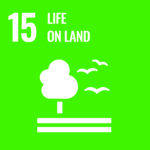This intervention contributes to:


1. Eyebrow terraces (“Boomerangs”) by Perma Atlas, in Morocco
Description
As a result of overgrazing and tree-cutting, the region of Anguelz in Morocco has been facing severe land-related stresses in the past decade. Where once lay lush and vibrant mountains, now the landscape has turned completely arid. With the help of Perma Atlas the people from Anguelz have come together to regreen the landscape and bring it back to its former healthy state. A major issue that the area is facing is the lack of rain and seasonal flooding events. Community members have been taught in workshops hosted by Perma Atlas how to implement three interventions to help mitigate and reduce the impacts of flooding and erosion. Eyebrow terraces, also called Boomerangs are micro-water catchment systems that collect and channel water runoff on steep slopes and help it to infiltrate into the soil. They do this whilst removing sediment and pollutants from the water flows. Boomerangs can help encourage the regrowth of vegetation. They enable water to infiltrate into the soil and surrounding area, providing seeds with the water they need to sprout in such arid and degraded landscapes. The project by Perma Atlas and the village of Anguelz has created a safety from flooding and heavy rains and has given the chance to the local people to learn different techniques used by their ancestors. Additionally, the implementation and maintenance of the techniques have offered job opportunities for the locals.
2. Micro-catchment water harvesting systems in dryland areas in Ethiopia
Description
This study focuses on using micro-catchment water harvesting systems to improve tree establishment in dryland areas, particularly in Gara Adulala, Ethiopia. In these areas, the main challenge for agriculture, especially planting trees, is the scarcity of water. The study suggests that collecting and storing rainwater can help address this issue. Different water harvesting techniques were tested, including semi-circular bunds, eyebrow terraces, contour-bench terraces, and infiltration pits. These structures are designed to collect runoff from rainfall and store it in the soil, providing moisture to tree seedlings during their early growth stages. The study found that semi-circular bunds and contour-bench terraces were the most effective structures for supporting the survival of tree seedlings in dry areas. These structures help retain moisture in the soil, which is crucial for the seedlings' growth. Overall, the research suggests that using micro-catchment water harvesting systems can improve tree establishment in dryland areas by providing much-needed moisture. This knowledge can help minimise the risk of tree loss during drought seasons and contribute to sustainable agriculture in these regions.



